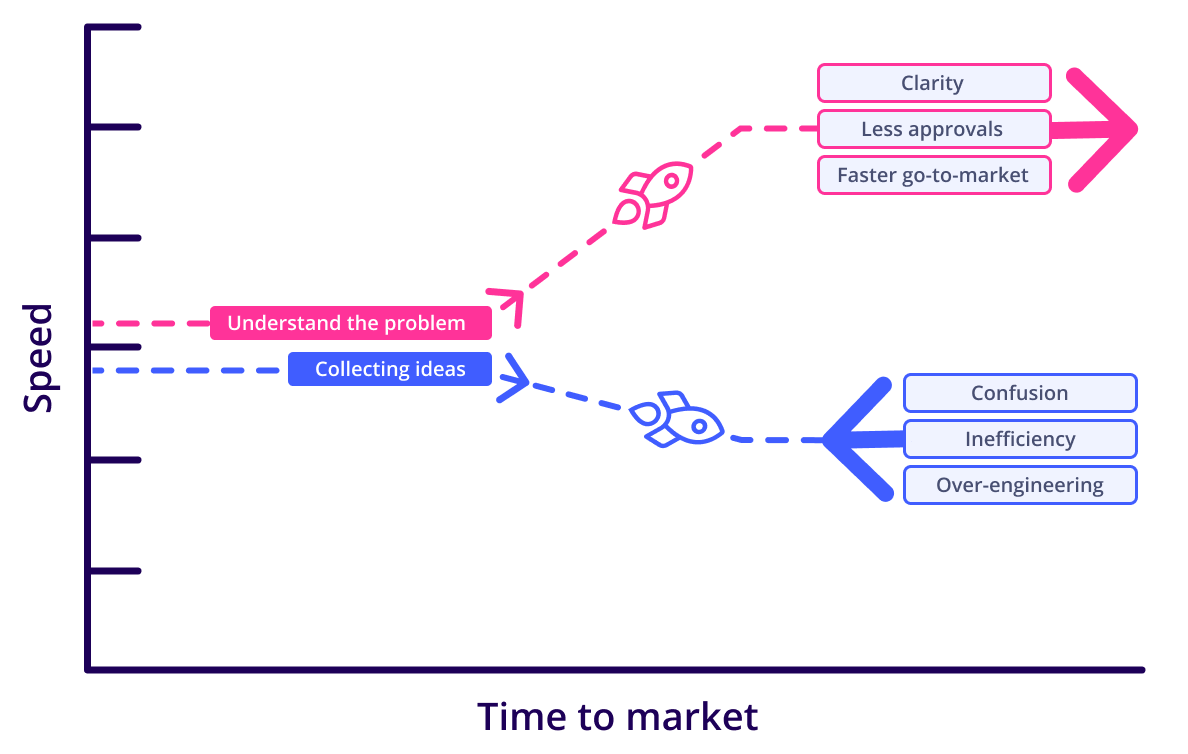Being the first to market can be a game-changer for companies that want to capture market share and consumer loyalty ahead of competitors. But the first-mover advantage also has drawbacks. If your company’s success is based on one initial novel business idea, your advantage will be hard to sustain. Let’s look at some examples of first-mover advantage and how your company can allocate resources effectively to reduce time-to-market.
Nick Woodman wanted a better way to film his friends surfing. He founded GoPro in 2002, first selling wrist straps, then producing a proprietary camera in 2004. This was the first commercially available action camera, giving Woodman’s business the first-mover advantage. GoPro became synonymous with the action camera product category and is still seen as best in class.
But being first doesn’t guarantee lasting success. Other brands started competing directly, GoPro had to lower prices, and its revenue has declined since a peak in 2015. It tried to diversify by entering the consumer drone market but had to recall and discontinue all Karma Drone units due to a loose battery flaw. GoPro made the mistake of trying to launch something without sufficient testing of the beta product and was unable to rival the more established drone brands. To understand this rise and fall, it’s worth examining the pros and cons of first-mover advantage.
Benefits of first-mover advantage
First-mover advantage is the competitive edge a business gains by introducing a new product or service to the market before competitors. Being first can enable a company to:
- Gain strong brand recognition and consumer loyalty
- Define the product category, becoming the standard against which the public judges later entrants
- Set the market price
- Have extra time to develop economies of scale and perfect the product further
- Develop strong relationships with suppliers and retailers
- Establish barriers of entry for competitors
- Secure patents
Gaining this strength in the marketplace does not come easily and requires much more than an original product idea. There are major obstacles to overcome, and being first to market has its own drawbacks.
7 disadvantages of being the first mover
While the first-mover advantage can give you a head start, it doesn’t guarantee long-term success. It costs approximately 60-75% less to replicate a product than it costs to create a new product. Competitors will inevitably enter the market, often at a lower price and with simplified technology. A first mover should, therefore, not rest on their laurels. Continuous innovation and honing an understanding of customers are essential to sustain the lead and keep competitors at bay.
These are some of the potential drawbacks of the first mover advantage:
- High costs and risks: Being the first mover often requires you to invest heavily in research and development without any guarantee of return. These initial investments can be taxing and risky, especially if it’s unproven if there’s a market for it.
- Incumbent inertia: Large, established companies might struggle to continue innovating because of bureaucracy, risk aversion, or clinging to existing profitable products. This inertia can make it difficult for them to evolve and make the most of their first-mover advantage.
- Customer education: First movers usually bear the burden of creating demand by educating the market on the functionality and benefits of the product or service. This customer education can be time-consuming and expensive, while later entrant competitors can benefit from this—like a cyclist getting less resistance in the leader’s slipstream.
- Rapid technological advancement: In industries where technology evolves rapidly, first movers might invest in a technology that soon becomes obsolete, allowing later entrants to leapfrog them with more advanced solutions.
- Lowered risk for competitors: Later entrants will watch you as the first mover, learning from your successes and failures. They can then avoid costly mistakes and introduce improved versions of your product or service.
- Resource allocation: Focusing on being a first mover might divert resources from your company’s core business, resulting in decreased profit in the short term. This is the classic challenge of finding the right balance in your portfolio between “cash cows” and “question marks” on a BCG matrix.
- Market retaliation: In some cases, entering a market with an innovative solution may provoke established players to retaliate. They may use aggressive pricing strategies or legal action to undermine the first mover's advantage.
Understand these disadvantages if your company aims to be the first mover. Weigh the potential benefits against the risks and consider proactive measures to mitigate the drawbacks of being a pioneer in the market.
Amazon as an example of sustainable competitive advantage
How did a company that sells books become so big? Well, Fortune magazine describes Amazon as the ultimate case study in corporate innovation. Launching its website in 1995 with the slogan “Earth’s biggest bookstore,” Amazon promised customers one million book titles at low prices.
Jeff Bezos’ company gained the first-mover advantage and sustained it by selling books below cost while expanding to other product categories like apparel, electronics, and sporting goods. It locked in customer loyalty through Amazon Prime, offering convenience that made people less likely to switch to competitors. Amazon is now the undisputed leader in online retailing worldwide, benefiting from economies of scale. It redefined the way the world shops, setting expectations that competitors are measured against.
And yet, it’s not really an e-commerce company. Amazon’s pay-as-you-go cloud computing service, AWS, is responsible for 74% of the entire company's operating income. Amazon leveraged its early lead and size to build a cloud infrastructure that it could rent out to other companies with on-demand scaling.
What started out as a side-project enabled Amazon to dominate cloud computing. These innovative forays into other categories have solidified its market position, allowing it to stay ahead of competitors and sustain its first-mover advantage.
How innovation leaders improve time-to-market
We’ve researched the difference between companies that outperform competitors on time-to-market. What’s noticeable is that innovation leaders invest more time in the early stage of understanding the problem—which then pays off in the final execution phase. These companies get to market faster because their early-stage research on the opportunity results in more clarity, requiring fewer approvals in later stages.

In contrast, laggards get dragged down by collecting a surplus of ideas without necessarily understanding the problem. The consequence is that they take an average of 6-16 months longer on average to get to market because of these drags on speed:
- Inefficient use of resources
- Confusion, pursuing the wrong paths
- Over-engineering, incorporating too many nice-to-have features
Think of innovation as a resource-allocation problem. It’s not just about generating novel ideas. Companies can win the time-to-market race by investing more time in the early stages of the innovation process, particularly in understanding the problem, research, and concept testing. This front-loaded approach saves time later on, enabling faster time-to-market to gain the first mover advantage.
We’ve developed the ITONICS Innovation OS to help you make informed decisions about resource allocation and connect the dots from strategy to execution. If you want to see how your team can innovate faster with ITONICS, book a demo today.




